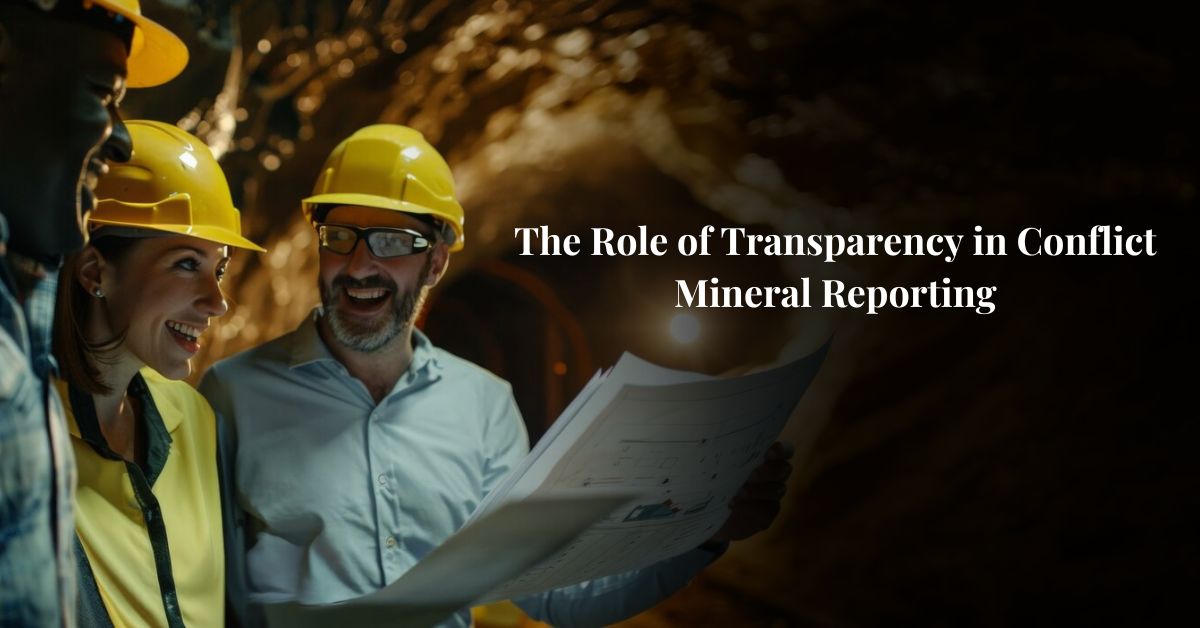
In today’s global economy, transparency has become a cornerstone of ethical business practices, particularly in industries dealing with natural resources. One area where transparency is critically important is in the reporting and regulation of conflict minerals. Conflict minerals—tin, tantalum, tungsten, and gold (collectively known as 3TG)—are often mined in conditions of armed conflict and human rights abuses, notably in the Democratic Republic of Congo (DRC) and surrounding regions. Ensuring conflict mineral compliance involves rigorous due diligence and transparent reporting practices to prevent these minerals from funding violence and exploitation. This article delves into the significance of transparency in conflict mineral reporting, the regulatory frameworks in place, and the broader impacts on businesses and society.
Understanding Conflict Mineral Reporting
Conflict mineral reporting is mandated by regulations such as the Dodd-Frank Wall Street Reform and Consumer Protection Act, specifically Section 1502, which requires publicly traded companies in the United States to disclose their use of conflict minerals originating from the DRC and adjoining countries. The aim is to prevent profits from mineral trade from funding armed groups and perpetuating violence in the region.
The Importance of Transparency
Transparency in conflict mineral reporting serves multiple purposes:
- Promoting Ethical Sourcing: Transparent reporting practices help ensure that companies source minerals responsibly. By publicly disclosing the origins of their minerals, companies can demonstrate their commitment to ethical sourcing and human rights.
- Building Trust with Stakeholders: Investors, consumers, and advocacy groups increasingly demand that companies act responsibly. Transparent conflict mineral reporting builds trust and enhances a company’s reputation, showing that it is committed to ethical practices and corporate social responsibility.
- Encouraging Industry-Wide Change: When companies are transparent about their supply chains, it puts pressure on others in the industry to follow suit. This can lead to broader industry-wide improvements in sourcing practices and greater overall accountability.
- Enhancing Regulatory Compliance: Transparency is crucial for regulatory compliance. Clear and honest reporting helps companies meet legal requirements and avoid penalties associated with non-compliance.
Regulatory Frameworks Supporting Transparency
Several regulatory frameworks and initiatives support transparency in conflict mineral reporting:
- Dodd-Frank Act Section 1502: As mentioned, this U.S. legislation requires companies to report on the use of conflict minerals and their origins. It has set a precedent for other countries to consider similar regulations.
- European Union Conflict Minerals Regulation: This regulation, effective from January 2021, requires EU importers of 3TG minerals to conduct due diligence and disclose their sourcing practices, ensuring that their supply chains are free from conflict minerals.
- OECD Due Diligence Guidance: The Organisation for Economic Co-operation and Development (OECD) provides guidelines to help companies identify and manage risks in their mineral supply chains. The guidance emphasizes transparency and responsible sourcing practices.
The Broader Impact of Transparency
Transparency in conflict mineral reporting has far-reaching implications beyond compliance and reputation:
- Empowering Consumers: Informed consumers can make ethical choices about the products they purchase. Transparency enables consumers to support companies that prioritize responsible sourcing and avoid those linked to conflict minerals.
- Supporting Human Rights: By disclosing their supply chains, companies help to break the link between mineral trade and armed conflict. This can lead to improved conditions for workers and communities in conflict-affected areas.
- Driving Technological Innovation: Transparency requirements push companies to develop new technologies and systems for tracking and tracing minerals throughout their supply chains. This innovation can lead to more efficient and effective compliance mechanisms.
Challenges to Achieving Transparency
While transparency in conflict mineral reporting is crucial, achieving it is not without challenges:
- Complex Supply Chains: Mineral supply chains can be incredibly complex, involving multiple intermediaries. Tracing the origins of minerals and ensuring accurate reporting can be difficult.
- Costs: Implementing transparent reporting systems and conducting due diligence can be costly, particularly for smaller companies.
- Data Reliability: Ensuring the accuracy and reliability of data from suppliers can be challenging, especially in regions with limited infrastructure and regulatory oversight.
Conclusion
Transparency in conflict mineral reporting is vital for promoting ethical sourcing, building trust with stakeholders, and encouraging industry-wide change. Regulatory frameworks such as the Dodd-Frank Act and the EU Conflict Minerals Regulation, along with guidelines from organizations like the OECD, support these efforts. Despite the challenges, the benefits of transparency are clear: empowering consumers, supporting human rights, and driving technological innovation. As the global economy continues to evolve, transparency will remain a key factor in ensuring that the trade of minerals does not come at the cost of human suffering.





